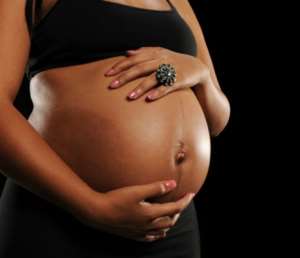
World Health Organisation (WHO) has underscored the importance of performing caesarean section on pregnant women when the patient needs it and on a case by case basis.
According to a new statement from the WHO, although the procedure is the commonest in the world and can save lives, it is often performed without medical need, putting women and their babies at risk of short and long-term health problems.
It further stated that caesarean sections could cause significant complications, disability or death, particularly in settings that lack the facilities to conduct safe surgeries or treat potential complications.
Caesarean Sections Rate
Since 1985, the international healthcare community considered the 'ideal rate' for caesarean sections to be between 10 percent and 15 percent.
New studies have revealed that when caesarean section rates rise towards 10% across a population, the number of maternal and newborn deaths decreases. But when the rate goes above 10%, there is no evidence that mortality rates improve.
'These conclusions highlight the value of caesarean section in saving the lives of mothers and newborns,' Dr Marleen Temmerman, Director of WHO's Department of Reproductive Health and Research said.
'They also illustrate how important it is to ensure a caesarean section is provided to the women in need and to not just focus on achieving any specific rate,' he said.
Adoption Of Robson Classification
The WHO has proposed the adoption of the Robson classification of caesarean section as the internationally applicable caesarean section classification system for better understanding of the trend.
The Robson system classifies all women admitted for delivery into one of 10 groups based on characteristics that are easily identifiable such as number of previous pregnancies, whether the baby comes head first, gestational age, previous uterine scars, number of babies and how labour started.
It is envisaged that using this system would facilitate comparison and analysis of caesarean rates within and between different facilities and across countries and regions.
'Information gathered in a standardised, uniform and reproducible way is critical for health care facilities as they seek to optimise the use of caesarean section and assess and improve the quality of care,' Dr Temmerman explained.
'We urge the healthcare community and decision makers to reflect on these conclusions and put them into practice at the earliest opportunity.'
BY Jamila Akweley Okertchiri




 We’re disappointed over gov’t’s lacklustre attitude to negotiations of our condi...
We’re disappointed over gov’t’s lacklustre attitude to negotiations of our condi...
 No more Buffer Stock as Mahama promises to decentralise SHS food supply
No more Buffer Stock as Mahama promises to decentralise SHS food supply
 NSS urges President Akufo-Addo to sign National Service Bill into law
NSS urges President Akufo-Addo to sign National Service Bill into law
 You're lying, your 7-11pm dumsor attributed to overloaded transformers is false ...
You're lying, your 7-11pm dumsor attributed to overloaded transformers is false ...
 Consult Council of State on anti-gay bill – Mahama advises Akufo-Addo
Consult Council of State on anti-gay bill – Mahama advises Akufo-Addo
 Transport Ministry has no power to determine fares – COPEC
Transport Ministry has no power to determine fares – COPEC
 Brace yourselves for more economic hardship – Prof Adei to Ghanaians
Brace yourselves for more economic hardship – Prof Adei to Ghanaians
 Any government depending on IMF is likely to fail – Grand Coalition
Any government depending on IMF is likely to fail – Grand Coalition
 Ghana risks losing premium cocoa position due to galamsey – COCOBOD laments
Ghana risks losing premium cocoa position due to galamsey – COCOBOD laments
 Akufo-Addo launches NSS policy document to tackle under-utilisation of service p...
Akufo-Addo launches NSS policy document to tackle under-utilisation of service p...
